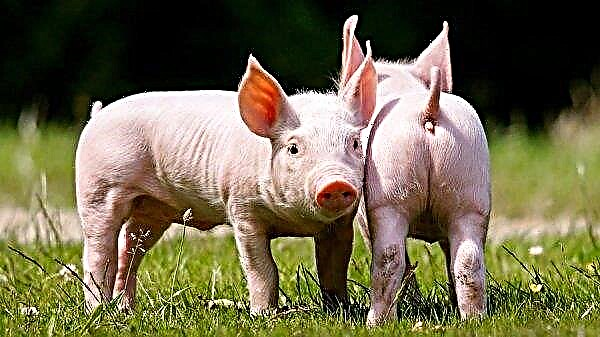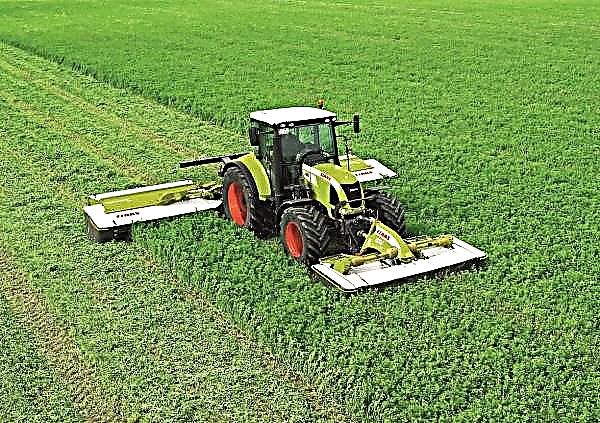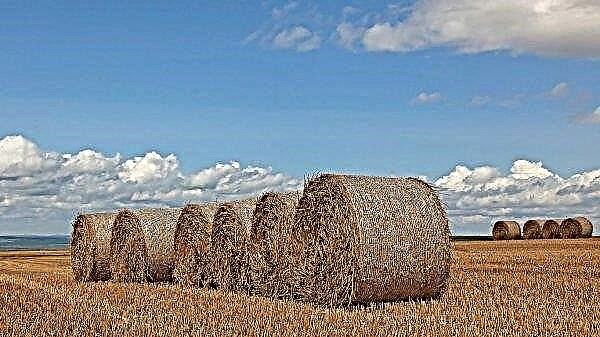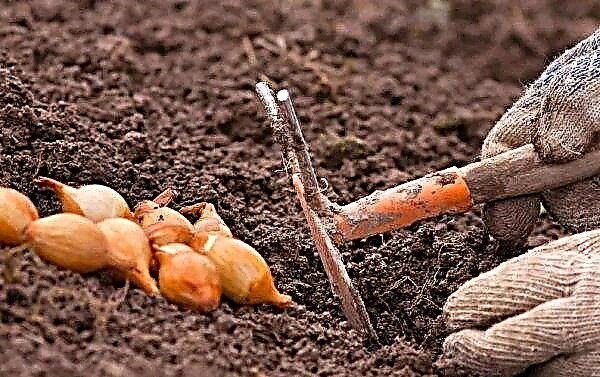Cabbage is one of the few vegetables that is able to maintain its taste and aesthetic qualities for quite some time. Fortunately, today there are a large number of proven storage methods that extend the "viability" of cabbage until spring. Under what conditions should a vegetable be stored, and what varieties are suitable for long-term storage, let's see.
Is it possible to store cabbage in an apartment
Storage of cabbage in the basement or garage is a common thing, and there are no special difficulties with it. But here are few who know how to keep the vegetable at home. However, there are a number of ways that even in the apartment do not lose the attractive appearance and taste of the product for a long time.
At home, you can store heads on the balcony, loggia, in the refrigerator. But in this process, the competent preparation of the product and the selection of the most suitable variety for preservation are of particular importance.
It should be noted that cabbage in the apartment can be stored even outside the refrigerator or balcony. For this, a whole, intact and not rotten head of cabbage is enough to be placed in a dark, well-ventilated pantry, where it can lie for up to two weeks.
Important! Young heads of cabbage deteriorate most quickly, because, due to their high moisture content, they quickly rot.
Which varieties are best suited
Each type of vegetable has certain pros and cons. And before deciding on the storage of a particular variety, you should carefully familiarize yourself with the features of each of them:
- White-headed. One of the most popular species that is perfectly preserved fresh during the winter season. However, it is recommended that preference be given to late varieties, which are harvested in the fall, from mid-September until the onset of the first frost.
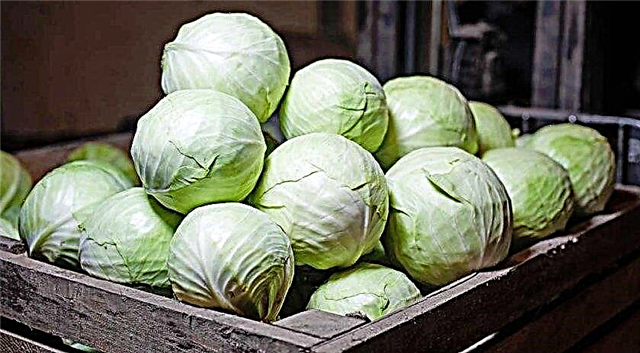
- Colored or broccoli. These species are not subject to long-term storage, because they quickly rot. They are recommended to be frozen or dried.
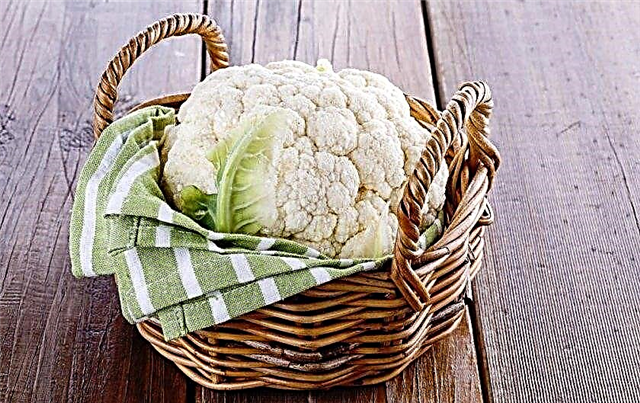
- Beijing or Brussels. The least storage-resistant species that begin to deteriorate with minimal microclimate disturbances or the absence of the required storage conditions that can be created, for example, on a loggia or balcony.
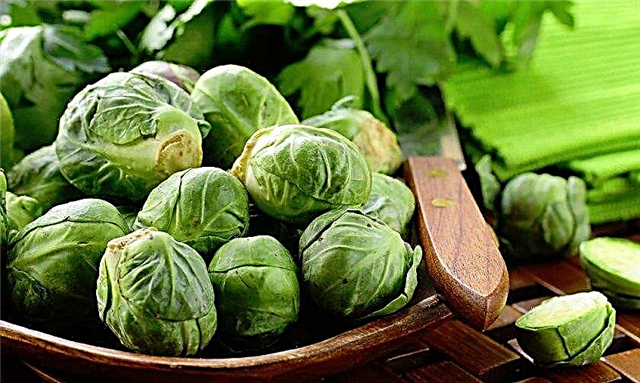
- Kohlrabi. By its properties, cabbage is not inferior to white cabbage, but due to its small size, it is most often stored in a frozen form. It perfectly retains its shape, does not lose its taste and healthy qualities after freezing, and is excellent for preparing various first and second courses.

Important! Regardless of the variety, only whole, dense, strong heads of medium size should be stored, without signs of mechanical damage, cracks, rotten areas and symptoms of ailments.
Where to store cabbage in an apartment
As noted above, there are several places in the apartment where you can send cabbage for the winter:
- Refrigerator. The most convenient and affordable place for long-term storage of vegetables. Having placed the cabbages in the lower drawers, you can be sure that the cabbage will retain its aesthetic and taste for three months. The only drawback of refrigerated storage is the limited volume of the boxes, because you can’t save a large number of forks.
- Balcony or loggia. An excellent option for storing vegetables is a balcony or loggia. To preserve cabbage, lockers are usually used, in which cabbage wrapped in cling film is stacked in a row. It is not recommended to use newspapers for wrapping forks, since the paint on them is saturated with harmful substances that can be "reprinted" on heads of cabbage. The disadvantages of storing the product on a balcony or loggia are unstable temperature indicators. At subzero temperatures, cabbage can freeze.
- Pantry. If there is a pantry in the apartment, it can be equipped with a storage place for vegetables. To do this, on previously manufactured racks, they are packed with dense, hard heads of cabbage with a cut stump, wrapped in several layers with a plastic film.
 This method is considered the simplest, but it requires regular visual inspection of the forks for rot, damage, ailments.
This method is considered the simplest, but it requires regular visual inspection of the forks for rot, damage, ailments.
Important! A vegetable wrapped in a plastic film is able to maintain its presentable appearance and taste for 5 months. In frozen form, it remains fresh for up to 10 months.
Preparing a place to store vegetables
The proper harvesting of cabbage for the winter begins with the appropriate preparation of the place, which has a number of requirements:
- Purity. First of all, the place for storing vegetables should be as clean as possible, and not only from household or organic waste, but also from mold and fungi. The presence on the walls of fungal or mold lesions contributes to the active reproduction of pathogenic microflora and, as a result, rapid spoilage of products.
- The absence of rodents and pests. Gnawing heads of cabbage with mice or rats will lead to quick spoilage of vegetables and a significant reduction in their shelf life.
- Disinfection. Before storing products, disinfect the premises using any available antiseptic agents. Shelving, cabinets, shelves and drawers, on which heads of cabbage will be located, are also subject to decontamination. Processed items must be dry before vegetables are placed.
- Ventilation. It is important to prevent stagnation of indoor air. Systematically, at least 1-2 times a month, it is recommended to carry out high-quality, full-fledged ventilation.
Did you know? The composition of the vegetable has a unique, rare vitamin U - anti-ulcer factor, which allows you to successfully fight peptic ulcer disease, heal wounds with stomach ulcers and duodenal ulcers.
How to save cabbage for the winter in the apartment
In the issue of preserving cabbage for the winter in the apartment, first of all, one should study the optimal storage conditions and know the maximum possible shelf life of a particular variety.
Storage time
As for the shelf life, they will depend on the method of preservation of vegetables. Any varieties in frozen form can remain fresh and healthy for 10 to 12 months, depending on the type of freezing (dry, drip, combined). Dried forks can be up to 1–2 years old. Sauerkraut is suitable for consumption for three months. But the shelf life of fresh cabbage will be determined by its variety:
But the shelf life of fresh cabbage will be determined by its variety:
- white-headed - 160-180 days;
- Beijing - 90-100 days;
- Savoy - 100-120 days;
- color - 110-120 days;
- Brussels - up to 90 days.
Optimal conditions
No vegetable storage methods can guarantee the success of the event if the main conditions suitable for this are violated. First of all, two important factors should be noted:
- Temperature. Cabbage negatively reacts both to heat and to cold, therefore, a stable temperature should be maintained in the room within 0 ... + 4 ° С. Ideal indicators are 0 ... + 2 ° C. At too high temperatures (more than + 5 ° C), the cabbage begins to deteriorate due to the intensive reproduction of microorganisms and pathogenic bacteria, at minus - it risks freezing.
- Humidity. An equally important factor in the storage of heads of cabbage is the humidity of the air in the room. Vegetable prefers rather high rates of 85–95%. Such a microclimate will extend the shelf life of the forks for as long as possible.

What vegetables can be stored in the neighborhood
Surprisingly, the shelf life of fresh cabbage will depend on the correct neighborhood. Together with it, for long-term storage, you can lay those vegetables that require similar conditions of detention: turnips, carrots, potatoes, beets, celery, asparagus, parsnips, radishes, corn, beans.
Did you know? In the world there are more than a hundred varieties of cabbage. However, all of them can be divided into 3 varieties: color, leaf and cabbage. The most popular and sought-after are: white, colored, Beijing, Brussels, broccoli.
It is better to abandon the head of cabbage near tomatoes, apples, pears, bell peppers, onions. The fact is that in the process of preservation, these vegetables and fruits emit a special substance - ethylene, under the influence of which the process of loss of marketable and taste qualities by cabbage occurs. Moreover, heads of cabbage become less resistant to parasites and ailments, change their structure, become loose and soft.
Video: 10 ways to store cabbage
Useful Tips
Simple recommendations will help you avoid mistakes when harvesting fresh cabbage for the winter:
- With any storage method, a visual inspection of the specimens should be carried out regularly for signs of rotting, dried up or damaged areas. If the leaves on the heads of cabbage begin to change color, darken, they urgently need to be removed, carefully cut with a sharp knife.
- Before heading out for wintering, small heads of cabbage are advised to soak for 15 minutes in a weak saline solution, then dry using a paper or woven towel. Such manipulations will make it possible to disinfect forks, prevent the development of ailments and parasites.
- If you lose the attractive appearance of cabbage, it is recommended to immediately process it: ferment or pickle.
- Initially loose, soft specimens should not be stored, even if they belong to late varieties.
- It is necessary to cut off the stem remains as deep as possible on heads of cabbage, since during long-term storage it can grow and form small forks.
It is quite possible to keep fresh cabbage in a city apartment if you clearly adhere to optimal temperature conditions and a humidity level that is comfortable for the vegetable. However, if it is not possible to store heads of cabbage in the apartment, then a lot of tasty and healthy preparations for the winter can be prepared from them.





 This method is considered the simplest, but it requires regular visual inspection of the forks for rot, damage, ailments.
This method is considered the simplest, but it requires regular visual inspection of the forks for rot, damage, ailments.
